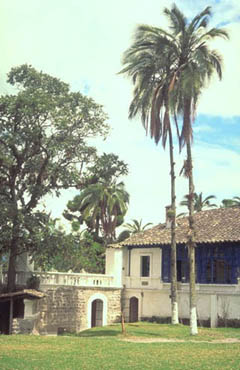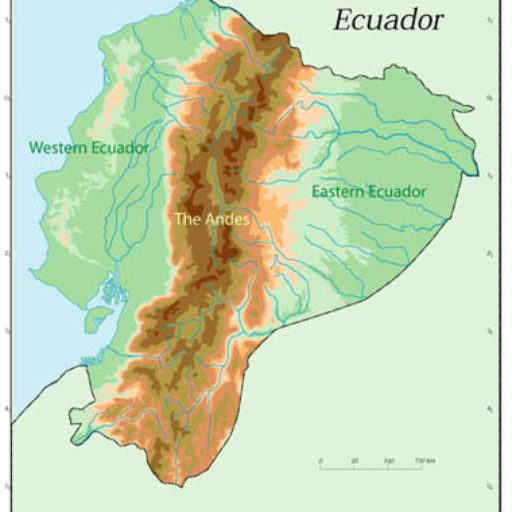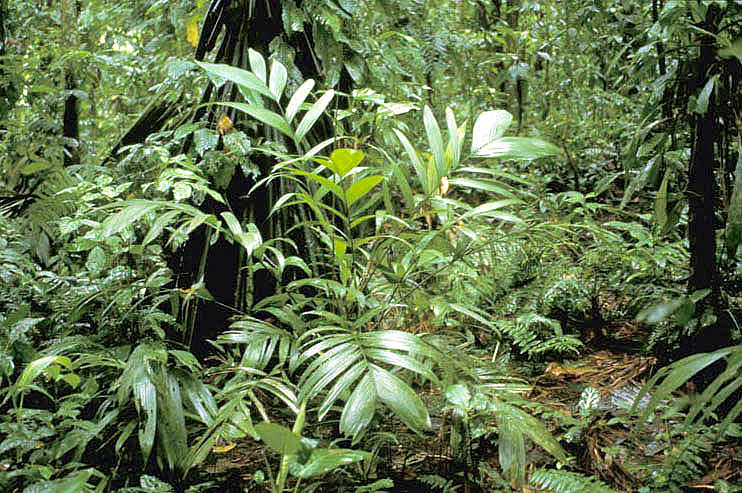Understory palm in dense group of 19 stems, up to 5.8 m tall. Stem 4.6 m from base to lowermost leaf. Diam at base 2.5 cm, DBH: 2.2 cm, diam below lowermost leaf 1.8 cm. Internodes at base 25 cm, at BH 16 cm, below lowermost leaf 2 cm. Internodes dark green and glaborous with numerous lichens. No of nodes 84, to 4 mm, clearly visible, the nodes making the uppermost 1/2 meter of stem somewhat rough. Some of the stems in the cluster straight, other bending. No of leaves 9. Leafsheet 17,5 cm, encircling the stem for 0.5 cm. Dark green, conveks-concave, margins fibrous. Petiole 35.5 cm conveks-concave, dark green. Rachis 89 cm. Basalmost 12 cm of the adaxial midridge flattened. No of pinnae 2 X 17, regulary distributed except for minor displacements. Pinnae in one plane, somewhat falcate and about equal size 44 X 3 cm. Adaxial side dark green with conspicous veins. Abaxial side light green. No. of infructescence 1, intrafoliar subtended by the lowermost leaf. At base incirkling 3/4 of stem. Profyl inserted 0.5 cm above the base. First sheeting bract inserted 0.4 cm above the profyl. No of sterile bracts 3, fleshy, yellow, 0.2 cm broad, 0.5 cm long, inserted 0.7; 2.6 and 3.8 cm above the profyl. Peduncle 6.5 cm long. Diam below lowermost branch 1.2 X 0.7 cm (ovate), yellow to green. Rachis 12 cm long, dark green with brownish pubescens. No of first order sidebranches 8 (only those with more than one rachillae), up to 7.5 cm long – the baselmost being the longest. Ovate in crossection. Diam at base 0.8 X 0.6 cm. Each sidebranch and rachillae subtended by a fleshy yellow bract. Basalmost sidebranch with two second order sidebranches 0.4 and 0.8 cm long and with a total of 10 rachillae. Total No of rachillae 42. Uppermost 8 inserted on main rachis. No of rachillae per first order sidebranch: from 2 to 10. Rachillae to 15 cm long, green with regulary distributed scars from fruits. Rachillae ending in a thin 0.5 cm long green infertile pointed apex. Few remaining, aperently immature fruits. Elipsoide 0.7 X 0.5 cm, light green and glaborous. Etnonote: According to Sr Joaquin Bustos and Sra Delia Almeida (Paacocha) this palm has no uses, is only found in priomary forest and is called “uesha ponga” in Quichna.
Latest posts by admin (see all)
- Aluminium Rattan Garden Furniture Design Ideas - September 11, 2019
- Popular Gardens and Parks in Sheffield, United Kingdom - September 18, 2018
- How New Eco-Friendly Garden Benches Help Plants and Consumers in the UK - February 26, 2018




Discussion: